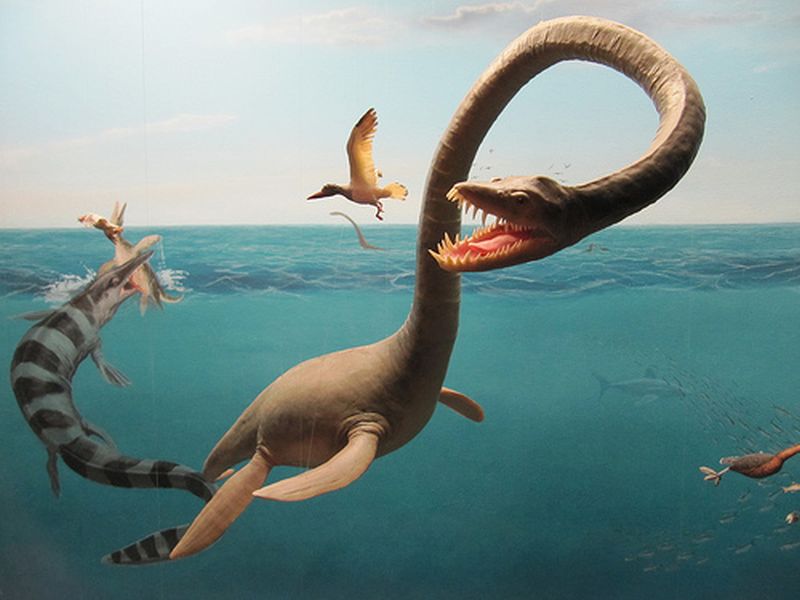People have been terrified by the deep blue ocean ever since our ancestors realized there are things living in the water that could slice them in half with a giant mouth full of razor-sharp teeth. Sure, nowadays we also have great white sharks, who could easily eviscerate you in seconds, and probably some unknown terrors from the deepest parts that we as species aren’t ready to meet just yet. But believe me, we’re living in the easy mode, because the ancient, prehistoric sea monsters would inhale the Great White through a nostril! Mother nature is freaking terrifying!
1. Shastasaurus
Shastasaurus is currently the largest marine reptile species ever found, clocking in at 65 feet (20m) or even more. But at that size Shastasaurus wasn’t the apex predator, as it mainly ate fish. It also looks a lot like today’s dolphins for some reason.

2. Dakosaurus
Is it a fish? Is it a reptile?… Why not both? Dakosaurus, first discovered in Germany, was one of the deadliest predators in the sea during the Jurassic period. It resembles our crocodiles a little, and it could reach up to 16 feet (5m) in length.

3. Thalassomedon
Thalassomedon means “sea lord” in Greek, and it’s for a damn good reason. Reaching all the way up to 40 feet (12m), its four flippers were nearly 7 feet (2m) each, allowing it to do insane underwater pivots, twists, and turns with deadly efficiency. It’s been scaring its prey for millions of years during the late Cretaceous period, when larger predators like the Mosasaur finally took its spot.

4. Tylosaurus
Odin have mercy on the souls of the poor bastards who had fallen prey to Tylosaurus’ enormous jaws. It’s yet another species of Mosasaur, and it was huge! Reaching more than 50 feet (15m) in length, the Tylosaurus was 100% carnivore with a very diverse diet. Scientists have discovered remains of fish, sharks, smaller mosasaurs, plesiosaurs, and even some flightless birds in its fossilized gut.

5. Liopleurodon
This one’s pretty popular, and you’ve probably heard of it – it’s Liopleurodon. This big boy, reaching 20 feet (6m) in length, lived during the Jurassic period in the seas that covered Europe, and was the apex predators at that era. If you consider that its jaws were over 10 feet long, it’s easy to see why this beast dominated the food chain.

6. Mosasaurus
If you thought the Liopleurodon was huge, you’ll soil your breeches when you hear how gigantic the Mosasaurus was. Some fossils suggests that it could reach as much as 50 feet (15m) in length, making it one of the largest marine predators of the Cretaceous period. Not even the least bit furry and cuddly, I’ll tell you that much.

7. Megalodon
And finally, we have the mega-shark – Megalodon. It’s one of the largest predators in marine history, as well as the largest sharks ever recorded. Just imagine a great white shark and multiply it by 3, as Megolodons could grow to mesmerizing 65 feet in length (20m)! It’s really hard to imagine how powerful and deadly this killing machine was, but try picture a school bus with teeth the size of your head each. Lots and lots of teeth. *shivers*

